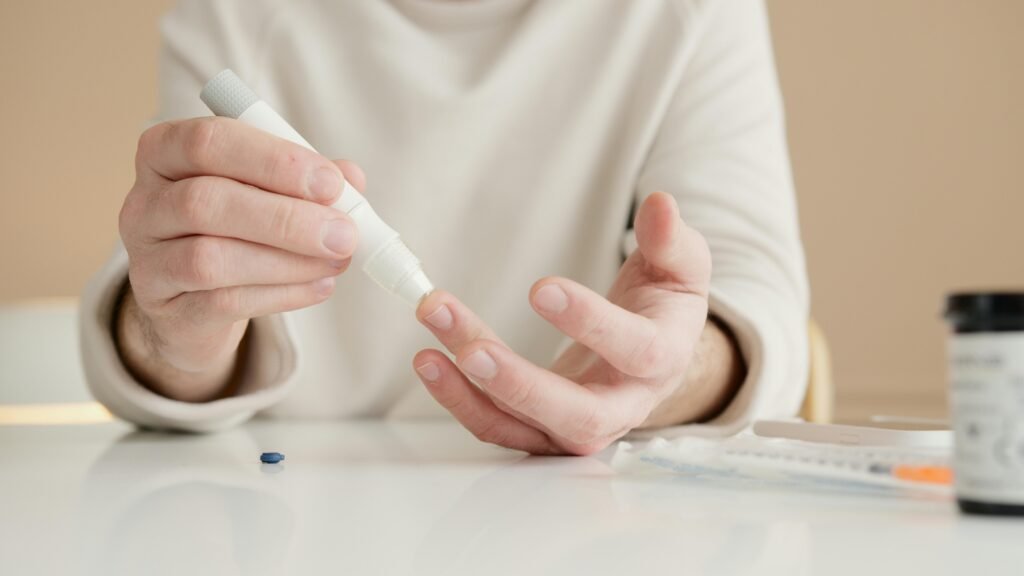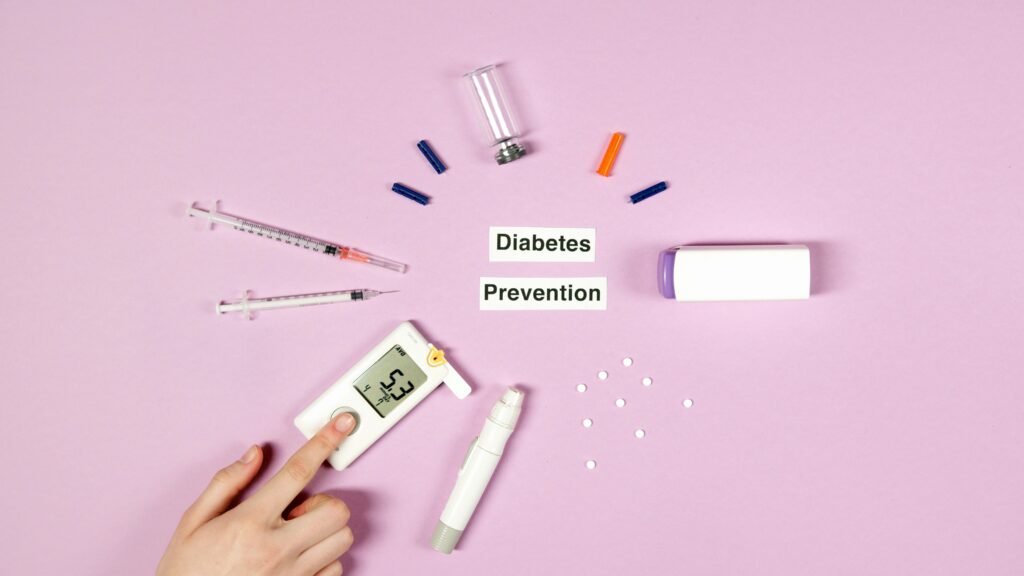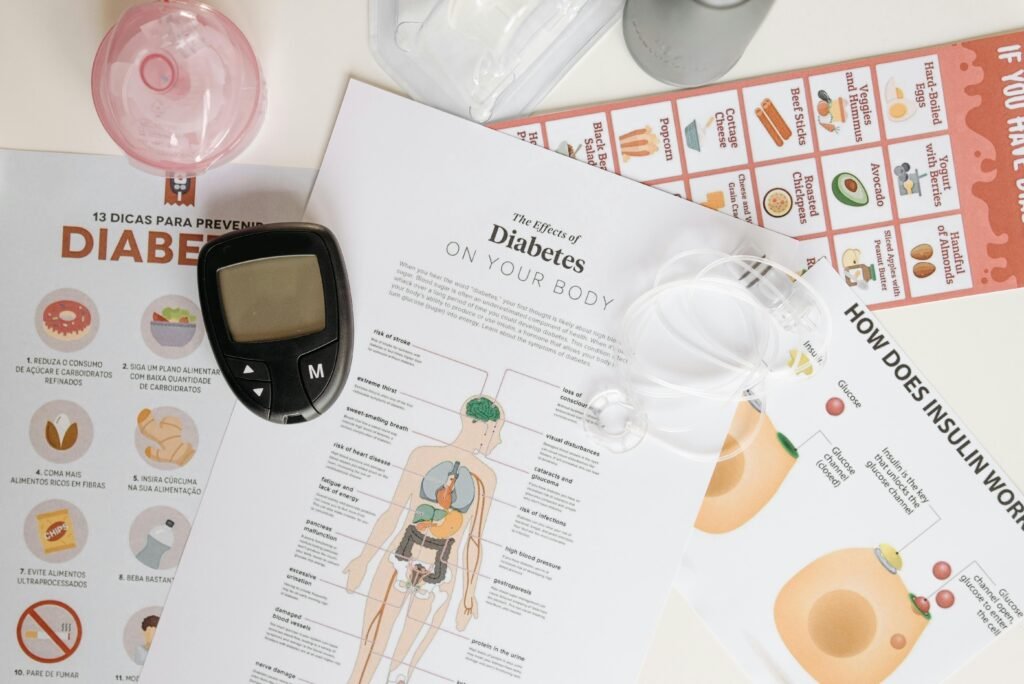Read the ten most common diabetes myths and get key information to help you take better care of your health if you have diabetes.. Bust myths relating to the management of blood sugar levels and your general wellbeing regularly.
Diabetes is a chronic and global disease that is now estimated to affect over 537 million adults in 2021 and the number could reach 643 million in 2030. Diabetes is probably one of the most examined diseases, yet it is still filled with myths and misconceptions that mislead the population and create incorrect perception of diabetes, which causes inappropriate treatment or mere hysteria.
Here, you will be able to read the 10 myths about diabetes listed below and their evidence-based refutation, and practical tips for proper diabetes management. By the end of the article you will know the true from the false, and be on the road to taking charge of your own health.
What is Diabetes? Types and Impact
Diabetes is a lifelong disorder in which there is too much sugar (glucose) in the blood. The former is glucose which is the main energy source of your body but it cannot get into cells without insulin — a hormone secreted by the pancreas. In diabetes, the process is disturbed and creates a situation in which a lot of glucose circulates in the bloodstream.
Types of Diabetes:
Type 1 Diabetes:
- A type of auto immune disease in which the body’s immune system targets insulin producing beta cells in the pancreas.
- Needs to take insulin for as long as they live.
- Most often occurs in the childhood and young adulthood, although onset can occur later in life.
Type 2 Diabetes
- The SCID most often seen according to different researchers, ranges from 90-95% of all SCID’s.
- Defined by the phenomenon where the cells fail to respond to the hormone insulin.
- Of course, associated with some behavioral parameters, still, genes are also influential.
Gestational Diabetes
- It happens during pregnancy because change in hormone alters sensitivity to insulin.
- May contribute to the development of Type 2 diabetes mellitus at some other time in adulthood.
Pre-Diabetes
- A prediabetes category, which is characterized by hyperglycemia but does not meet the criteria for diagnoses of diabetes.
- The severity of which can be mitigated using lifestyle changes.

Diabetes Management: Empowering Lifestyle Changes for Natural Control
Diabetes Myths
Myth 1
Consuming Excess Sugar Leads to Diabetes
The Reality
Various scholars regard regular sugar consumption as a primary cause of weight gain and hence Type 2 diabetes, this is wrong. Diabetes can be attributed to both genetic endowment as well as life style and the environment.
What Science Says
While the risk of developing the disease rises with obesity, it is also possible for lean people to fall prey to Type 2 diabetes. SSBs are directly related to risk since weight and metabolism are affected by such products.
Takeaway: Moderation is key. One, majors on reducing intake of additional sugars and getting into an adequately healthy diet.
Myth 2
Many patients with diabetes are advised, they can never take desserts or any sweets.
The Reality
This is where one of the most believed folk theories comes from. Diabetes do not means you have to completely avoid sweets since they can be taken in moderation together with a healthy diet.
Tips to Enjoy Sweets Safely
- Practice Portion Control: The portions should be chosen small for a better exclusion of the problem of blood sugar level rising.
- Pair with Protein or Fiber: Substituting some of the sweets taken with high fiber foods such as nuts slows down the rate of sugar absorption.
- Choose Healthier Alternatives: In preparing home made cakes and other foods, it is recommended to use natural supplements such as stevia or erythritol.
Myth 3
This disease is only possible if one is overweight
The Reality
Although, overweight is one of the causes for type 2 diabetes, it is not the only reason. Despite the healthy BMI people can still get diabetes as a result of genes, age, color, or some other factors.
Did You Know?
- Lean type 2 diabetes is an established entity, especially in Asians, as genetic contribution is relatively more in these populations.
- A third of people with Type 2 diabetes are not overweight or obese.
Actionable Advice: It does not matter the weights they have as each one of them should live a healthy lifestyle.
10 Proven Ways to Reduce Belly Fat Naturally and Effectively
Myth 4
Insulin is Only for Severe Cases of Diabetes
The Reality
Insulin is a lifesaving drug for Type 1 diabetes and Type 2 diabetes patients at the late stage or in case of poor glycemic control with OADs. It is not the last ditch effort but a normal and proved therapeutic approach.
Why Insulin?
- It aids in reducing fluctuating blood sugar levels and managing its associated related diseases.
- Prevents chronic damage of the organs due to the high rate of sugar in the blood stream.
Tip: If you are prescribed with insulin, try to see this as a tool, not a failure on your end.
Myth 5
Carbohydrates Are Off-Limits for Diabetics
The Reality
Every day, carbohydrate intake is a must in every meal whether for a normal person or diabetic. The emphasis should be made on the quality and quantity but not on the exclusion of it.
Understanding Carbs
Simple Carbs: Located in sweet products and are released in the body quickly causing an elevated blood sugar level.
Complex Carbs: Available in whole grains, legumes and vegetables—gives constant energy and improves the glycemic index.
Diet Tips
- Avoid processed and white food products and instead turn to whole grain products for instance whole grain bread.
- Men should aim on having a carbohydrate intake of 130 grams while women should aim at taking 3 grams of carbohydrates per day.
Myth 6
Exercise is Unsafe for People with Diabetes
The Reality
Among all strategies of maintaining healthy levels of blood glucose, exercise ranks one of the highest. It enhances the ability of the body to respond insulin, helps in weight loss and minimizes the chances of complication coming up. Tough, some measures are needed.
Safe Exercise Practices for Diabetics:
- Measure blood glucose before and after any exercise.
- You should drink a lot of water and one should avoid working out hungry.
- Incorporate movements such as walking, swimming and gentle yoga and then work up for intense forms of exercise.
Myth 7
Gestational Diabetes Goes Away After Pregnancy
The Reality
Although most women are able to return to normal health after their pregnancy, having had GDM raises the prospect of diabetes type 2 developing later in life. Obesity and diabetes in the later years may also be expected in babies that were born to mothers that suffered from gestational diabetes.
Preventive Strategies
- Create healthy postpartum weight.
- An appointment should be set for follow ups so as to check on the blood sugar level frequently.
Myth 8
Diabetes is All About Controlling Blood Sugar
The Reality
Diabetes care is not limited to merely having your blood glucose level checked. It involves maintaining overall health to prevent complications like:
Cardiovascular Diseases: People with diabetes are more likely to have a heart attack or develop other related complications such as stoke.
Kidney Disease: Long term effects of high blood sugar include diabetes kidney disease.
Neuropathy: Pain or loss of feeling anywhere on the body is a common symptom of nerve damage, but particularly in the feet.
Comprehensive Care:
- Monitor blood pressure, cholesterol, and kidney function regularly.
- Adopt a holistic approach that includes a healthy diet, regular exercise, and stress management.
Myth 9
Natural Remedies Can Cure Diabetes
The Reality
As of now there is no known cure for diabetes and natural cures should not be thought of as a replacement for institutionalized medical treatment. As for outer therapies, some supplements or herbs may work for the condition but must not be the main treatments.
What Experts Say:
Dr. Frank Hu, Chair of the Department of Nutrition at Harvard T.H. Chan School of Public Health, states, “Natural remedies can be helpful but are not a substitute for a comprehensive management plan.”
Pro Tip: Always ask your doctor before you attempt to use any other type of medications or treatments.
Myth 10
Pre-Diabetes is Not a Serious Condition
The Reality
Pre-diabetes is a serious indicator, because up to 70 percent of those with pre-diabetes will develop Type 2 diabetes. But it is a reversible type of damage, so if significant lifestyle changes are made in time, it is not fatal.
Steps to Reverse Pre-Diabetes
- Choose whole food and do not eat processed food most of the time.
- Exercising for 30 minutes a day, five days a week or 150 minutes a week or more.
- Lose some weight if possible; even a little can help; 5-7% reduction can tremendously decrease the risk.
Diabetes Management: A Holistic Approach
Regular Monitoring
- Take fasting blood sugar level and postprandial level and use a glucometer to monitor level for at least once a day.
- Always get an HbA1c test every three to six months. Healthy Eating: Choose foods with high amounts of nutrients, better protein amount and fiber’s vegetables.
- Reduce intake of food that contains processed and high sugar content.
Stay Active
- Exercise not only reduces blood glucose but also increases the moods and energy levels in clients.
Mental Health
- Diabetes burnout is real. Stay minding or meditate, or if necessary, discuss it with a therapist or a clinician.
Education
- Make certain to educate yourself regarding your condition so that you can take appropriate decisions.

Conclusion
These myths can not only deceive people into making wrong decisions that harm their health, but also deny themselves treatment or even a chance at receiving accurate information or better sugar control. Understanding these myths will help dispel them and enable you to act to better manage your diabetes. Remember, diabetes is not a death sentence it is a chronic disease that can be managed well when enhanced by knowledge, lifestyle changes, and medication.
FAQ’s
Can people with diabetes eat sweets or desserts?
Yes, people with diabetes can enjoy sweets in moderation. Portion control, pairing sweets with fiber or protein, and opting for healthier alternatives like natural sweeteners can help manage blood sugar levels effectively.
Are only overweight people at risk of diabetes?
No, diabetes can affect people of all body types. Although being overweight is a risk factor for Type 2 diabetes, other factors like genetics, age, ethnicity, and lifestyle habits also play a crucial role.
Is insulin only needed for severe diabetes cases?
No, insulin is a necessary treatment for Type 1 diabetes and may be prescribed for Type 2 diabetes when other medications fail to control blood sugar levels. It’s a safe and effective therapy, not a “last resort.”
Should people with diabetes avoid all carbohydrates?
No, carbohydrates are an essential part of a healthy diet. The focus should be on consuming complex carbs like whole grains, legumes, and vegetables, which provide sustained energy and better blood sugar control.
Can exercise be dangerous for people with diabetes?
Exercise is generally safe and beneficial for people with diabetes. It helps improve insulin sensitivity, control blood sugar levels, and promote overall health. Always check blood sugar levels before exercising and start with low-impact activities if you're new to exercise.
Does gestational diabetes disappear after pregnancy?
Gestational diabetes often resolves after childbirth, but it increases the risk of developing Type 2 diabetes later. Women who have had gestational diabetes should monitor their blood sugar levels and maintain a healthy lifestyle.
Is diabetes only about controlling blood sugar?
No, diabetes management involves more than just blood sugar control. It includes maintaining heart health, kidney function, and overall well-being to prevent complications like cardiovascular disease, neuropathy, and kidney damage.
Can natural remedies cure diabetes?
There is no cure for diabetes. While certain natural remedies may help control blood sugar levels, they should be used alongside, not instead of, evidence-based medical treatments.
Is pre-diabetes not a serious condition?
Pre-diabetes is a significant warning sign that blood sugar levels are higher than normal. Without intervention, it can progress to Type 2 diabetes. Lifestyle changes like diet, exercise, and weight management can reverse pre-diabetes.
Are artificial sweeteners safe for diabetics?
Yes, most artificial sweeteners are considered safe for people with diabetes. They can help reduce overall calorie and sugar intake but should still be used in moderation.
Can children develop diabetes?
Yes, children can develop diabetes. Type 1 diabetes is more common in children, but cases of Type 2 diabetes in younger age groups are increasing due to rising childhood obesity rates.
Does diabetes mean you’ll have low energy all the time?
Not necessarily. Proper diabetes management through diet, exercise, and medication can help maintain steady energy levels. Persistent fatigue might indicate poorly controlled blood sugar and should be discussed with a doctor.
Is it safe to drink alcohol if you have diabetes?
In moderation, alcohol can be consumed by people with diabetes, but it’s important to monitor its impact on blood sugar. Always eat before drinking and check your blood sugar levels.
Can diabetes cause blindness?
Diabetes can lead to diabetic retinopathy, a condition that damages the blood vessels in the eyes. However, regular eye exams and good blood sugar control can significantly reduce this risk.



